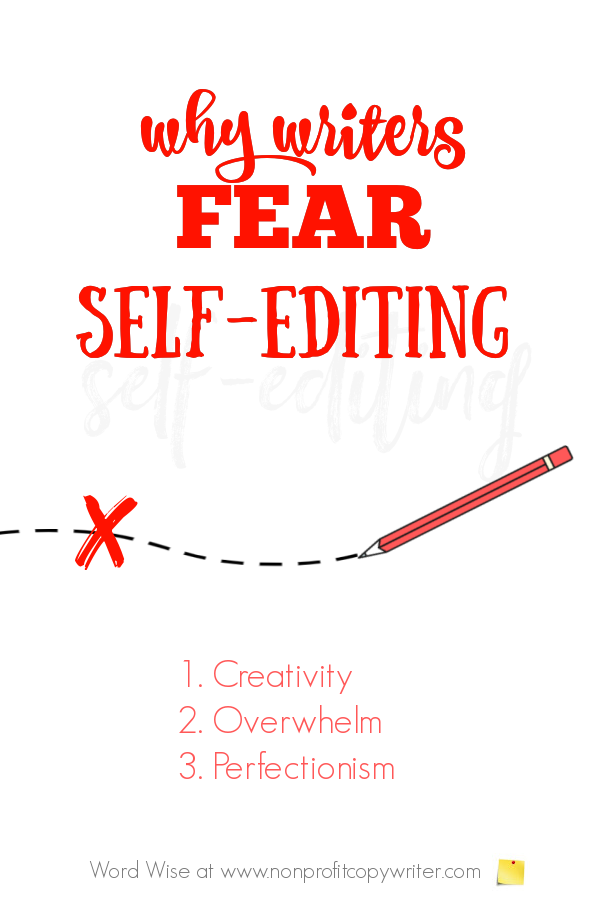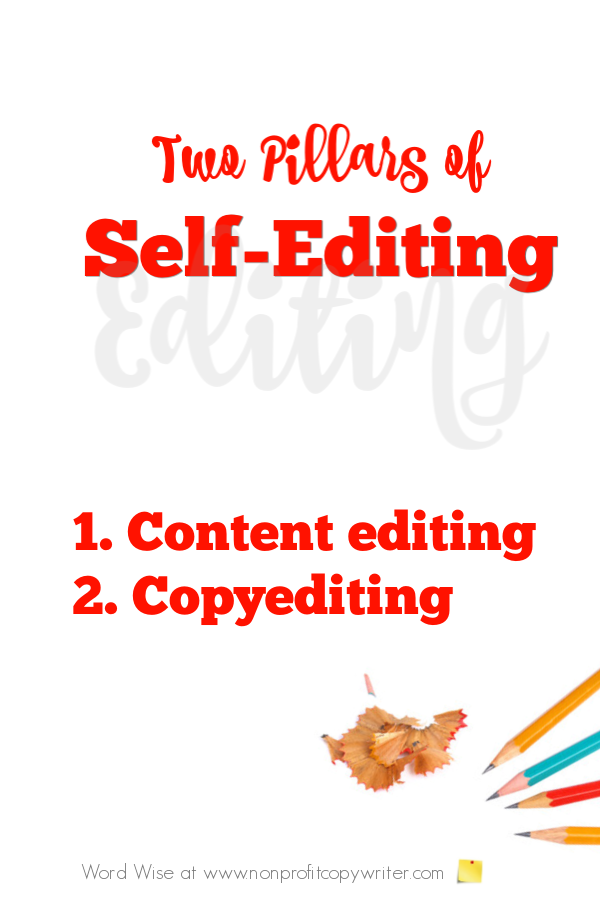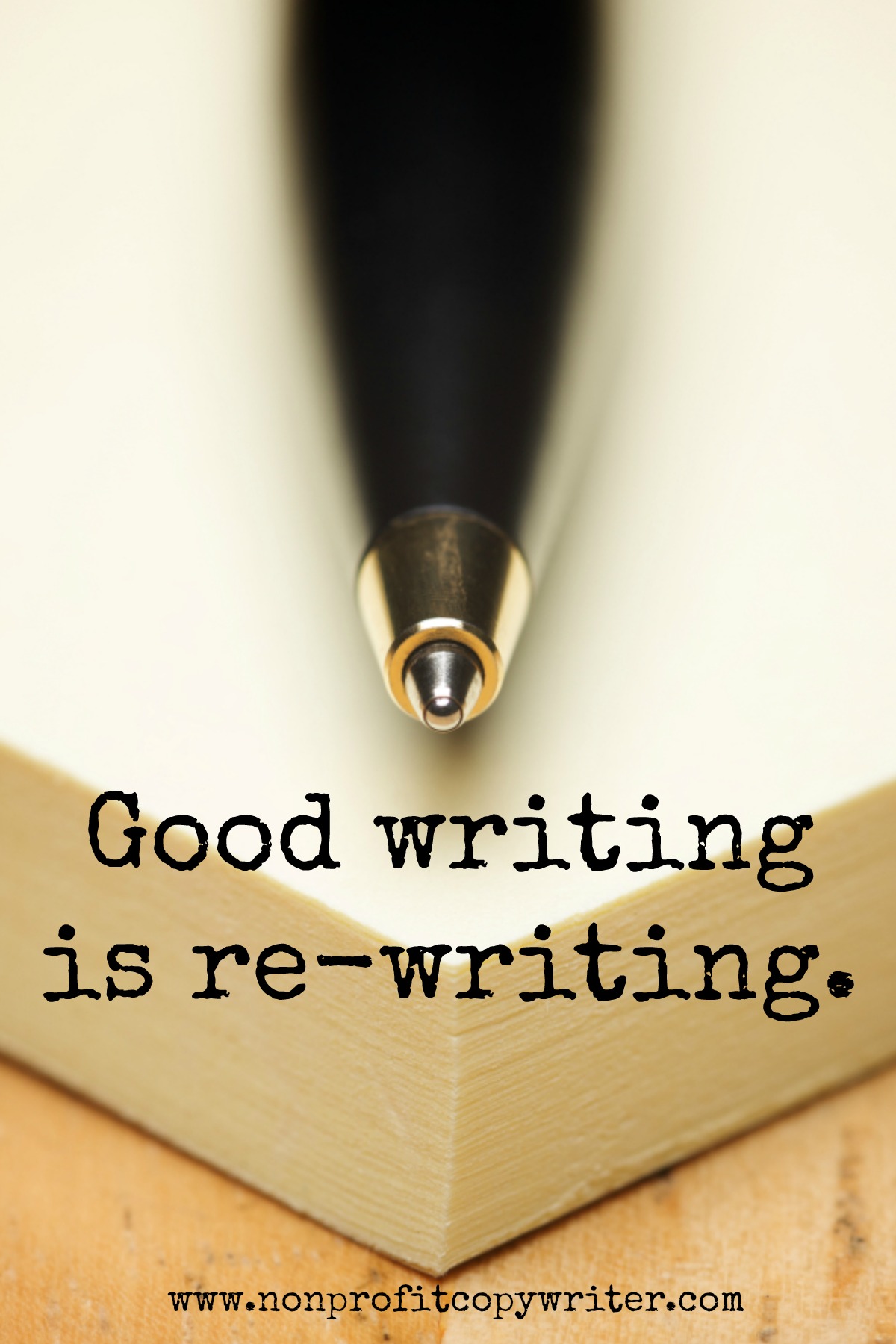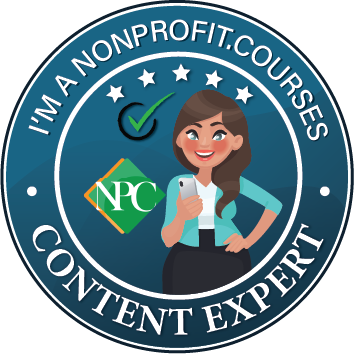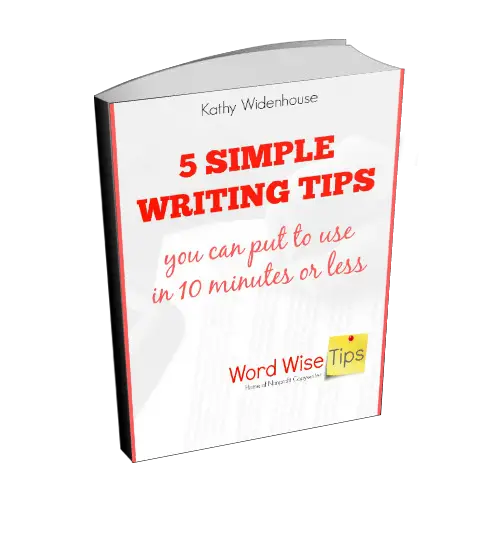Save Time: Get 5 Simple Writing Tips
you can put to use in 10 minutes
Self-Editing Made Simple
Award-winning writer Kathy Widenhouse has helped hundreds of nonprofits and writers produce successful content , with 750K+ views for her writing tutorials. She is the author of 9 books. See more of Kathy’s content here.
Updated 7.12.25
Self-editing is an important skill to learn in order to be a good writer. But maybe you quake in your boots (or shake at your keyboard) at the idea of editing our own work.
The fact is that editing your writing isn’t all that mysterious.
Here’s a simple way to look at it …
Editing is the process of revising a piece of writing, so it is ready to be published.
Self-editing is the work you to your own writing to make it ready to be published. It is the process of correcting, condensing, or otherwise modifying your writing to make it shine.
Self-editing can be simple
One reason you may get nervous about editing your own work is that writers are, by nature, creators. We’d much rather craft a new piece than wrestle with one that’s already on paper.
A second reason you might shy away from editing your work is that the process seems to be overwhelming. It’s one thing to write a first draft. It’s quite another to get it “up to snuff” so that someone else wants to read it (and even pay for it.) After all, entire books and courses are taught about editing a manuscript. As a result, you may not be confident in what makes a piece of content acceptable. You’re not sure of the standards that “real” editors use to use to fix your words.
And to top it off, we writers can be perfectionists. Objectivity can be elusive. It’s easy to get stuck on preserving your precious words so that you never revise a thing … or be so hung up with getting the piece “just right” that you never finish or submit or publish anything.
But here is good news for the edit-shy writer: editing needn’t be hard, confusing, or painful. There are some simple basics about the process that you can learn and use.
Once you begin to understand the fundamentals to editing, you can get over the intimidation.
- You’ll know how to get started and what to do.
- With some practice, you’ll welcome the editing phase because you know it will strengthen your writing. When you post a piece online, send it to a client or an editor, or give an advance copy to readers, you’ll have a lot more confidence that you’re giving them your best work.
- You will get to the point where you say, “Good writing is re-writing.”
You likely know these editing basics already. But I’m all about making writing simple, so here’s a tutorial to guide you.
Self-edit 2 specific areas of your writing
You can begin the process of self-editing as soon as you complete your messy first draft. First, look at your piece from a “big picture” point of view. Then, drill down and look at it close-up – sentence by sentence, word by word. Some writers call these the “Twin Pillars of Editing.”
Pillar #1: Content editing
Think of content editing as a “zoom out” or big-picture view of your writing.
Here is where you address how you present your subject matter. This pillar focuses on the content and structure of the writing. It emphasizes improving the content’s substance — ideas, arguments, evidence, and clarity — rather than just sentence-level issues.
As you review your content’s subject matter, look for at least 4 things.
- Structure. Is your content well-organized? Check the logic of your argument. Does one idea flow well into the other so it makes sense?
- Value. Does you content meets its intended purpose and audience? Is your material interesting, original, and written in an engaging way so that readers get something out of it? Check to see if you need to include extra illustrations, stories, statistics, quotes, or explanations to add value.
- Accuracy. Verify that your information is correct. What about your documentation – have you fact checked, quoted accurately, and cited your sources?
- Clarity. Are you communicating ideas clearly, with continuity, logically, and with sound reasoning? Adjust sentences and paragraphs for clarity and impact. Check your transitions so that the piece flows.
Content editing is also called …
- Developmental editing. It’s a term is often used in book publishing. Developmental editing involves shaping the manuscript at a high level. At this bird’s eye view, you’ll check for workable and logical structure, content, pacing, clarity, logic, and tone.
- Structural editing. This term focuses more narrowly on how the material is organized – for instance, the chapter arrangement, flow of ideas, and headings.
- Substantive editing. You may hear this term during a later-stage draft review when your content or manuscript is not in its messy first draft form, but still needs deep improvement.
Your goal with content editing is to make sure your content is well-organized and valuable to your intended reader.
Pillar #2: Copyediting
Think of copyediting as a “zoom in” or close-up look at your writing.
While content editing focuses on the subject matter, here is where you proofread the mechanics in your piece – the finer details of language and style. Check for grammar mistakes, spelling errors, typos, missing words, repetition, awkward sentences, passive voice, subject-verb agreement, misplaced modifiers, homonyms, verb tenses, and split infinitives.
Get out your nitpicker and look at …
- Grammar and syntax. Correct grammatical errors. Mix up your sentence lengths – break up run-on sentences and combine fragments. Are some paragraphs too crowded with more than one idea? Fix them.
- Punctuation and spelling. By all means, use the spell check function on your software. But also check to make sure that proper nouns and specialty terms are spelled (and capitalized or not capitalized) consistently.
- Language. Where possible, use a simpler word rather than a multi-syllable word. If you write the introduction in a conversational tone, then keep that style throughout the piece. Likewise, if you’re writing an academic paper, eliminate slang and relaxed language.
- Formatting. Adhere to the publication’s writing guidelines for citation style, headings, and SEO.
Your goal with copyediting is to make your writing grammatically correct, easy to read, and clean.
Self-editing is a skill you can develop
If you’re just starting out and are new to the process of editing your own content, don’t try to fix everything at one. Break your self-editing into stages. And start with just one task at a time.
Content editing (for the big picture)
Ask:
- Does the piece have a clear purpose?
- Does it flow logically?
- Are the ideas well-developed and supported?
- Is anything missing or repetitive?
- Will the reader get it?
Copyediting (for the details)
- Watch for weak verbs and vague nouns.
- Fix grammar, punctuation, word usage, and typos.
- Check for consistent style (headings, spelling, formatting).
- Read sentences aloud — awkwardness stands out more that way. Rewrite sentences that are not smooth, clear, and simple.
Self-editing is like a muscle. The more you use it, the stronger it gets.
To get practice, take a look at your old drafts. Start with one of the Twin Pillars of Editing. Make adjustments and then leave your piece. Come back the next day and check on the other pillar.
Do that over and over with each piece you write.
Over time, you’ll develop your own approach to self-editing. You’ll find you not only get better at it … you’ll also find yourself eager to get through that messy first draft and get to the real writing.
Which is editing.
More About Editing Your Own Writing
Use the 4 Cs of Writing (But Only If You Want Readers to Understand You) ...
Write Simply: Avoid 3 obstacles that keep you from being readable ...
11 Weak Words to Avoid in Writing ...
Simplify Your Writing: Why Word Choice Matters ...
Want Clear Writing? Make It Short ...
Run-On Sentences Can Be Your Friend. Fragments, Too...
Slay Superlatives to Show, Rather Than Tell ...
Avoid Jargon in Your Content So Outsiders Feel Like Insiders ...
Write First, Edit Later: Stop Editing While Writing With These Tips ...
3 Great Reasons to Use an Online Word Count Tool ...
Self-Editing: Swap Out These 7 Overused Writing Words ...
How to write cleaner for better results ...
5 copywriting fixes to make you sound professional ...
Weed out weasel words for stronger writing ...
Quick Tip to Get Started Writing Strong Each Day ...
Parallel Construction Explained: a simple mark of quality content writing ...
Passive voice: it's an easy fix with this writing tip ...
Self-Editing Tip: Start a sentence with the subject, not extra words ...
The simplest (and best) copywriting tip ...
Readability check: an easy way to make your writing cleaner ...
Exclamation Point?! When in Doubt, Leave It Out ...
4 copywriting tricks anyone can master ...
Write better descriptions when you ditch these 2 words ...
More editing tips on our Pinterest board ...
The Writing Process
The Writing Process: The Key to Writing Faster and Better ...
3 Tips for Starting Your Writing Project ...
4 Writing Styles: When to Use Each One ...
Return from Self-Editing Made Simple to Nonprofit Copywriter home
As an Amazon Associate I earn from qualifying purchases.
Share This Page

Named to 2022 Writer's Digest list
BEST GENRE/NICHE WRITING WEBSITE

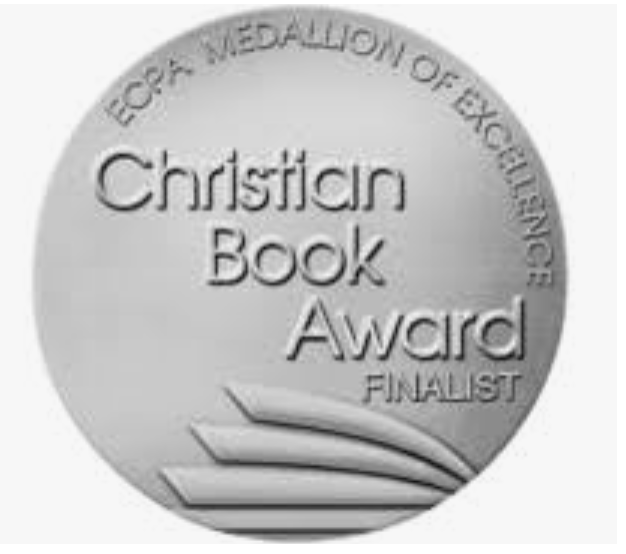
Stop Wasting Time!
Grab your exclusive FREE guide, "5 Simple Writing Tips You Can Put to Use in 10 Minutes or Less"





